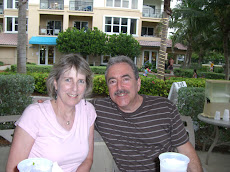 My favorite artist is Paul Klee. One day I would like to visit this museum:
My favorite artist is Paul Klee. One day I would like to visit this museum:The Zentrum Paul Klee is a museum dedicated to the artist Paul Klee, located in Bern, Switzerland. It features about 40 percent of Paul Klee’s entire pictorial oeuvre.
Livia Klee-Meyer, Paul Klee's daughter-in-law, donated her inheritance of almost 690 works to the city and canton of Bern in summer 1997. Additional works and documents donated and loaned by the family and the Paul-Klee-Foundation and a further 200 loans from private collections contributed to creating a very large collection of works by the artist. The decision to build the museum in the Schöngrün site on the eastern outskirts of the city was made in 1998, and renowned Italian architect Renzo Piano was contracted the same year. A preliminary project was elaborated in 2000. The building was completed in 2005. It takes the form of three undulations blending into the landscape.
Livia Klee-Meyer, Paul Klee's daughter-in-law, donated her inheritance of almost 690 works to the city and canton of Bern in summer 1997. Additional works and documents donated and loaned by the family and the Paul-Klee-Foundation and a further 200 loans from private collections contributed to creating a very large collection of works by the artist. The decision to build the museum in the Schöngrün site on the eastern outskirts of the city was made in 1998, and renowned Italian architect Renzo Piano was contracted the same year. A preliminary project was elaborated in 2000. The building was completed in 2005. It takes the form of three undulations blending into the landscape.
Throughout his career, Paul Klee used colour in a variety of unique and diverse means, in a relationship that has progressed and evolved in a variety of ways. For an artist that loved so much of the natural world, it seems rather odd that Klee originally despised color, believing that it was in itself, little more than a decoration to a work.[citation needed]. Eventually, Klee would learn to manipulate color with great skill, coming to teach lessons on colour mixing and color theory to students at the Bauhaus. This progression in itself is of great interest because his views on colour would ultimately allow him to write about it from a unique viewpoint among his contemporaries.
A turning point in Klee's career was his visit to Tunisia with Macke and Louis Molliet in 1914. He was so overwhelmed by the intense light there that he wrote: Color has taken possession of me; no longer do I have to chase after it, I know that it has hold of me forever. That is the significance of this blessed moment. Color and I are one. I am a painter. He now built up compositions of colored squares that have the radiance of the mosaics he saw on his Italian sojourn. The watercolor Red and White Domes (1914; Collection of Clifford Odets, New York City) is distinctive of this period.
Klee often incorporated letters and numerals into his paintings, as in Once Emerged from the Gray of Night (1917-18; Klee Foundation, Berlin). These, part of Klee's complex language of symbols and signs, are drawn from the unconscious and used to obtain a poetic amalgam of abstraction and reality. He wrote that "Art does not reproduce the visible, it makes visible," and he pursued this goal in a wide range of media using an amazingly inventive battery of techniques. Line and color predominate with Klee, but he also produced series of works that explore mosaic and other effects.
Klee often incorporated letters and numerals into his paintings, as in Once Emerged from the Gray of Night (1917-18; Klee Foundation, Berlin). These, part of Klee's complex language of symbols and signs, are drawn from the unconscious and used to obtain a poetic amalgam of abstraction and reality. He wrote that "Art does not reproduce the visible, it makes visible," and he pursued this goal in a wide range of media using an amazingly inventive battery of techniques. Line and color predominate with Klee, but he also produced series of works that explore mosaic and other effects.



No comments:
Post a Comment